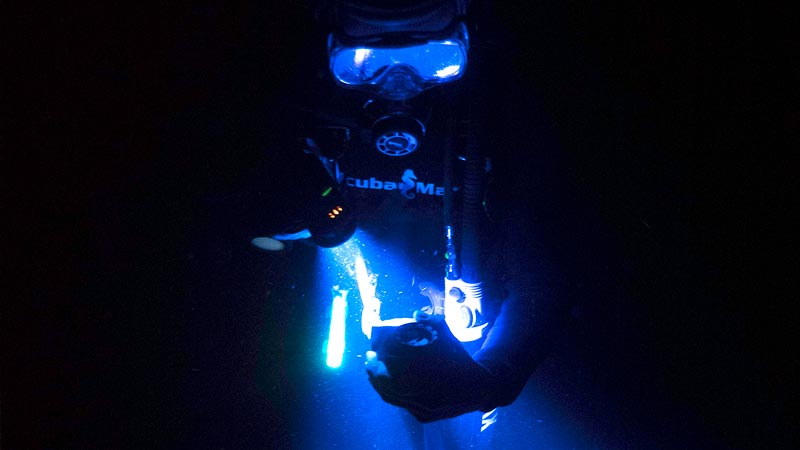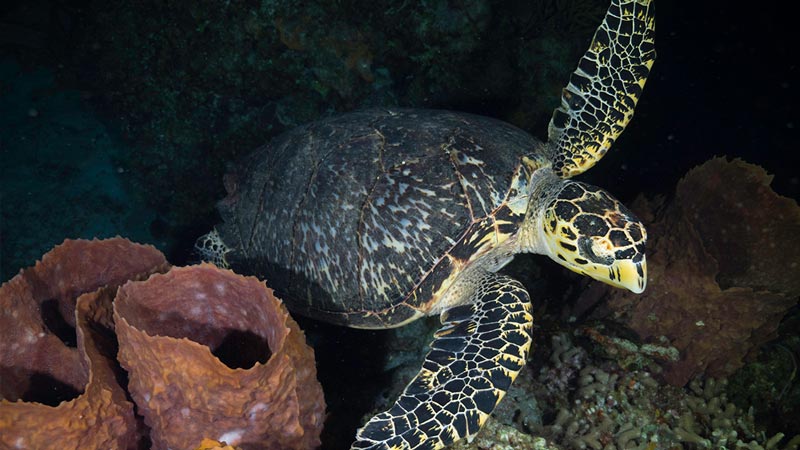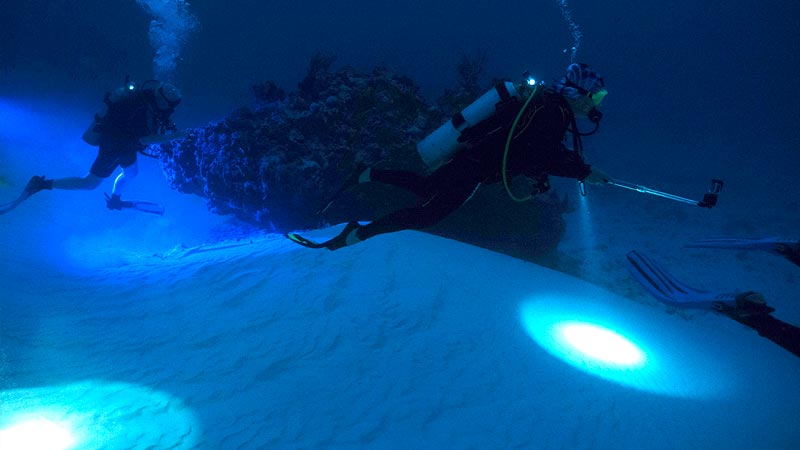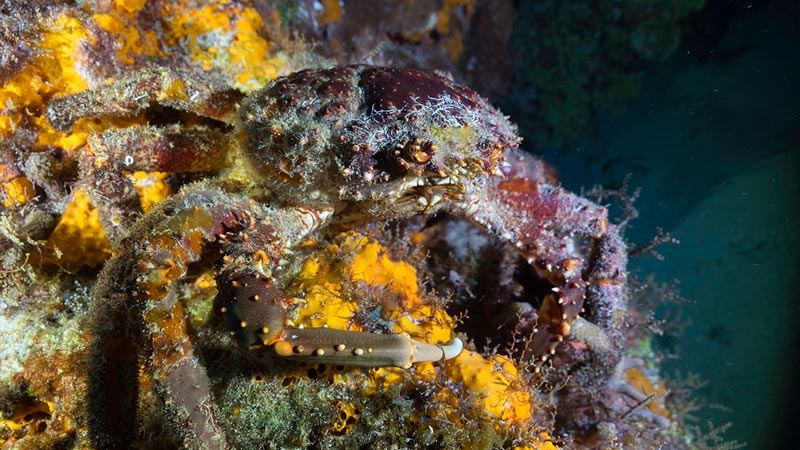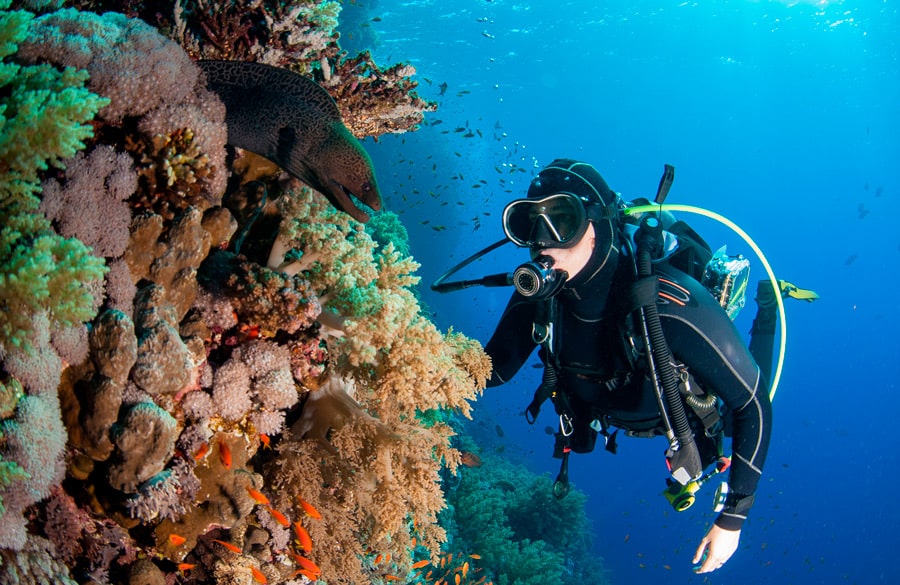3. Underwater Flashlight Items to Consider
Your head flashlight for diving or main lamp is an essential tool during night diving, so choose it carefully.
– Consider the beam of light must be consistent and adequate for night diving. You have to see where you are going. The beam angle is the one that will give you a wider field of view, ideal for shallow or concentrated recreational diving. It will allow you to see farther and is ideal for cave or wreck diving.
– Look for a diver flashlight whose intensity is adjustable. Bear in mind that animals can run away from too intense light beams. The lighting modes will allow you to adapt the intensity. Your dive light should have at least 3 or 4 different ones.
– Reflectors are more recommended than spotlights. With them, you can cover a larger area with a soft and uniform light.
– Make sure that the batteries last long enough to keep your diving light on for the entire duration of the dive. We recommend the rechargeable ones. You will be coherent with nature and you will also save money.
– Look for dive lights that you can switch on easily. It’s easier to turn on and off with a click than it is to turn the lens cover.
– Scuba diving lights have negative buoyancy, so if you don’t want to lose yours, make sure it has a lanyard to attach it to your wrist. Look for non-slip handles.
– Type of bulb. There are different types of halogen bulbs, Xenon, HID, Tungsten, and LED. The ones that consume less battery with a powerful illumination are the LED.
– Do not forget to consider the diving depth before buying your flashlight. If you exceed the maximum depth, the water tightness of the dive flashlight can fail.
The bulbs can have red, blue, or white light. The latter is the one that offers a more natural vision of the tonalities.
Another important piece of advice is: never forget to include a secondary dive light in your night dive gear. If your main lamp fails, you will have to resort to it. Therefore, it is not a luxury. Remember, if this happens, it is time to finish the dive.
Look for a good secondary quality lamp as well. A reliable and smaller scuba diving light is the best option in this case. It should be small enough to keep in your BCD. For example, the scuba diving light you use to see into the cavities during daytime dives would be an excellent choice.
Warning lights are also important during night dives. Their goal is not so you can see better, but that others can see you. Chemical light sticks are an excellent option though there are also warning lights with rechargeable batteries.
You now know how to use a dive light during a night dive. Tell us, where do you plan to do the next one?




